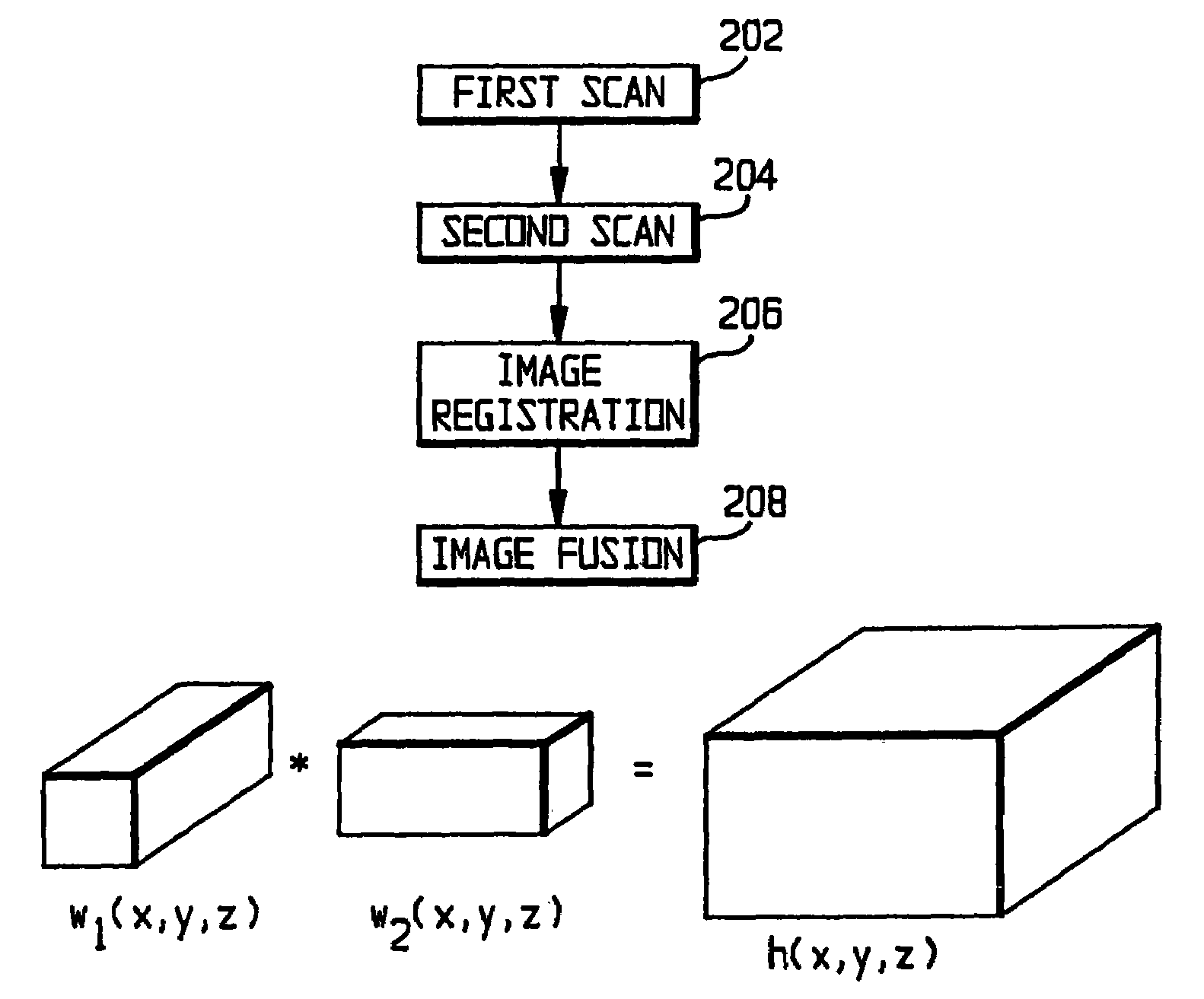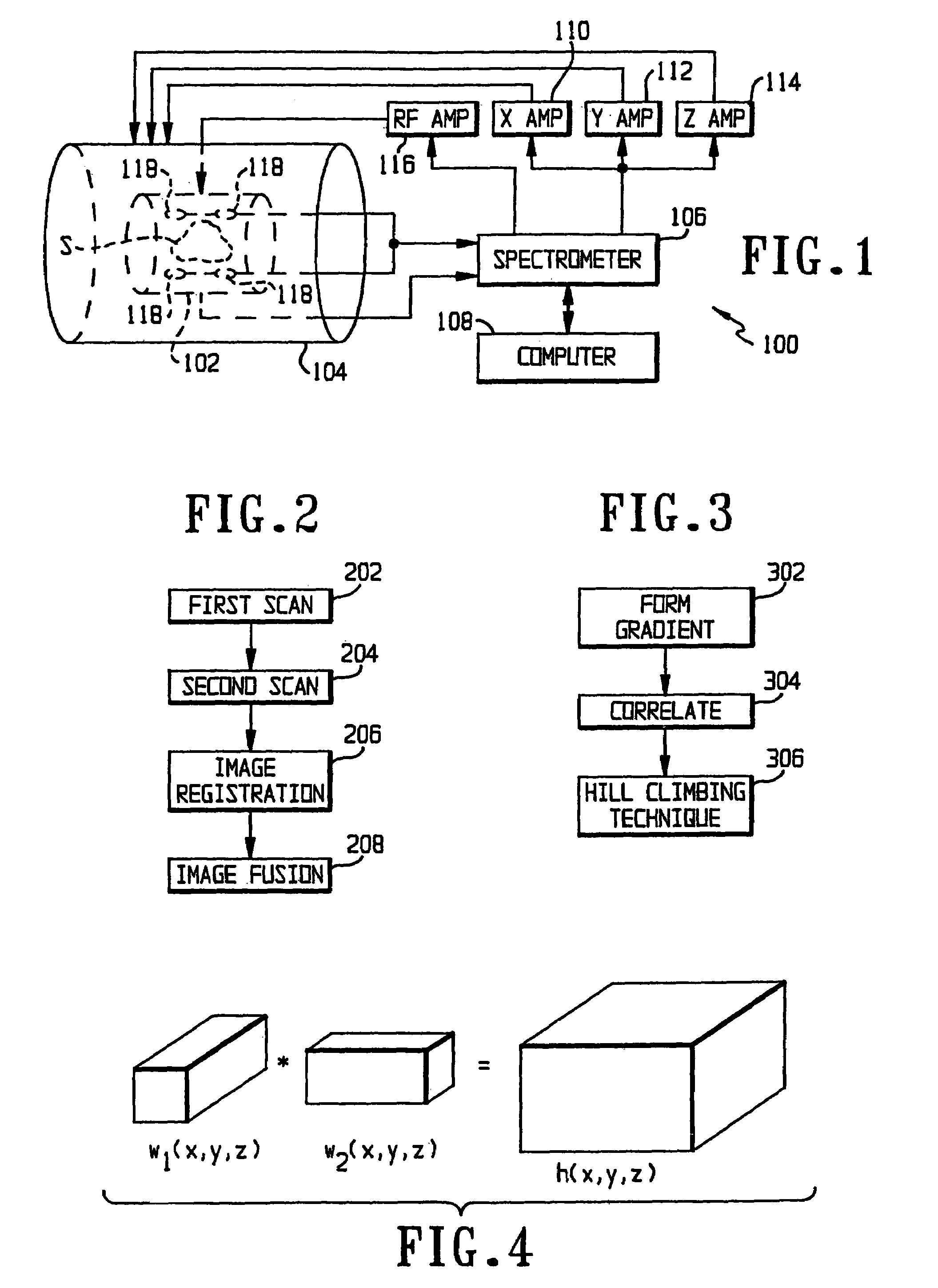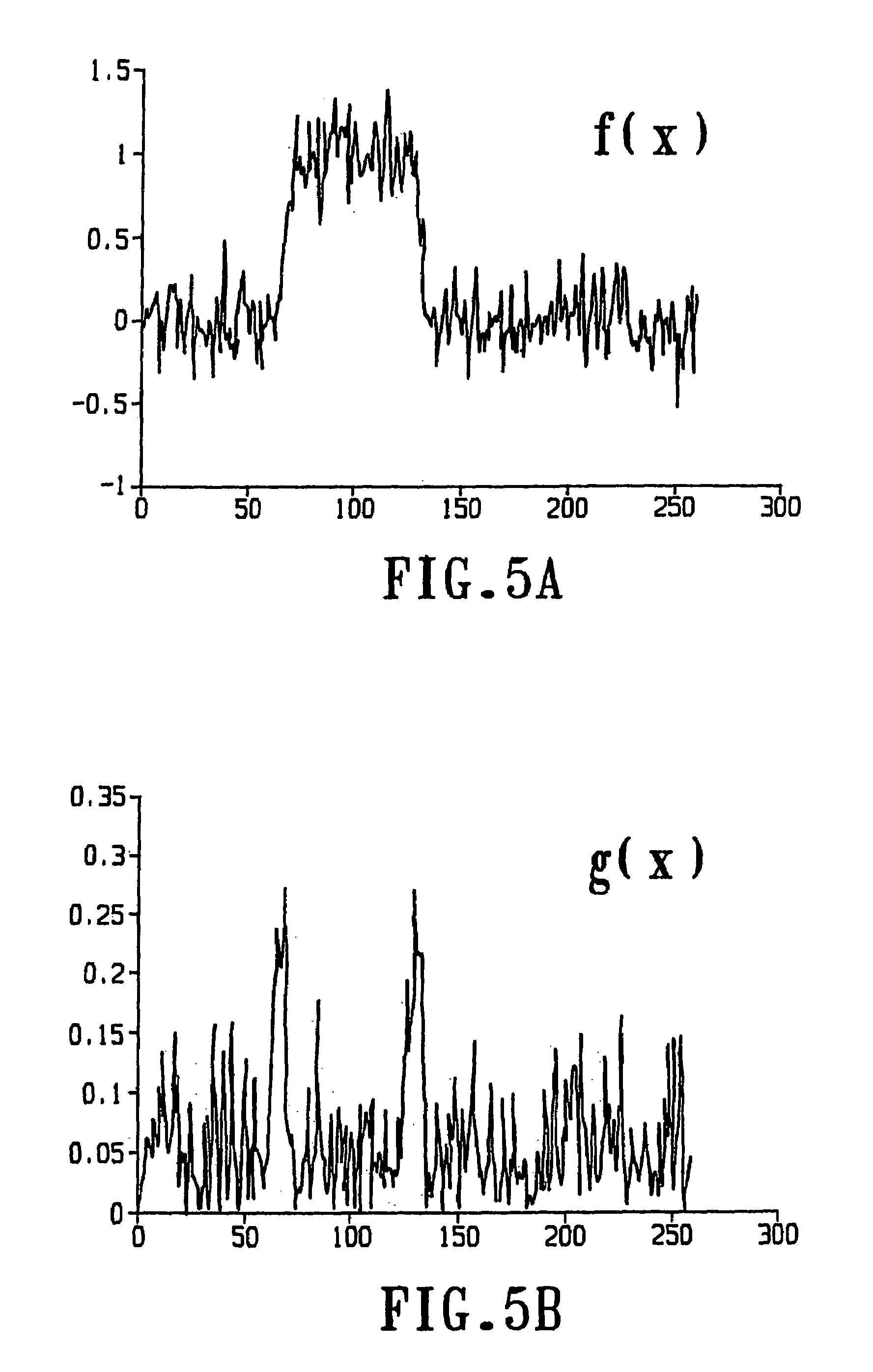Magnetic resonance method and system forming an isotropic, high resolution, three-dimensional diagnostic image of a subject from two-dimensional image data scans
a magnetic resonance and image data technology, applied in the field of system and method for improving the resolution and tissue contrast in mri, can solve the problems of low contrast, small and intricate musculoskeletal structures to be imaged, and noisy mri images, so as to improve tissue contrast, improve inter-slice resolution and tissue contrast, the effect of improving the resolution and tissue contras
- Summary
- Abstract
- Description
- Claims
- Application Information
AI Technical Summary
Benefits of technology
Problems solved by technology
Method used
Image
Examples
Embodiment Construction
[0028]A preferred embodiment of the present invention will now be set forth in detail with reference to the drawings.
[0029]FIG. 1 shows a block diagram of an MRI system 100 on which the present invention can be implemented. The system 100 uses an RF coil 102 and a gradient coil 104 to apply the required RF and gradient fields to the subject S. A spectrometer 106, acting under the control of a computer 108, generates gradient signals which are amplified by an X amplifier 110, a Y amplifier 112 and a Z amplifier 1.14 and applied to the gradient coil 104 to produce the gradient fields. The spectrometer 106 also generates RF signals which are amplified by an RF amplifier 116 and applied to the RF coil 102 to produce the RF fields. The free induction decay radiation from the sample S is detected by the RF coil 102 or by one or more local receiving coils 118 and applied to the spectrometer 106, where it is converted into a signal which the computer 108 can analyze.
[0030]The computer 108 s...
PUM
 Login to View More
Login to View More Abstract
Description
Claims
Application Information
 Login to View More
Login to View More - R&D
- Intellectual Property
- Life Sciences
- Materials
- Tech Scout
- Unparalleled Data Quality
- Higher Quality Content
- 60% Fewer Hallucinations
Browse by: Latest US Patents, China's latest patents, Technical Efficacy Thesaurus, Application Domain, Technology Topic, Popular Technical Reports.
© 2025 PatSnap. All rights reserved.Legal|Privacy policy|Modern Slavery Act Transparency Statement|Sitemap|About US| Contact US: help@patsnap.com



